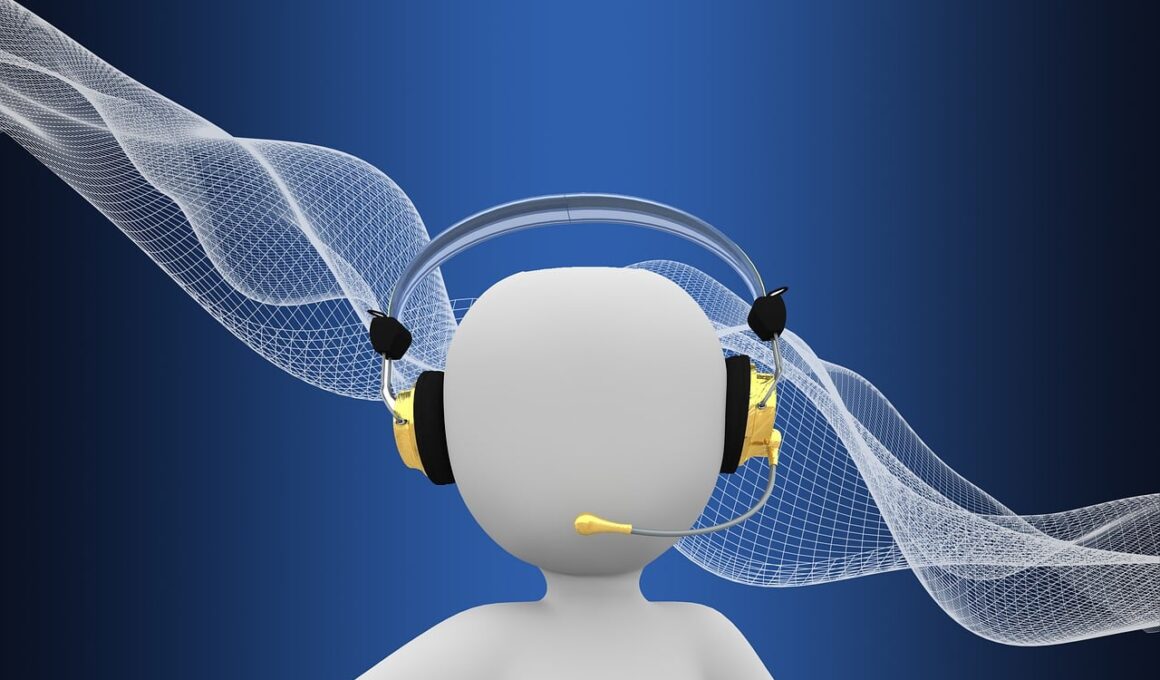Personalizing Customer Interactions through Help Desk Integration
In today’s competitive market, businesses realize that excellent customer service is vital for success. Help desk integration involves utilizing technology to streamline customer interactions across various platforms. By centralizing communication, businesses can ensure that every customer inquiry or issue is addressed promptly and efficiently. This integration minimizes response time, ensuring customers feel valued and appreciated. Moreover, data from customer interactions can be leveraged to gain insights into customer behavior, preferences, and feedback. These insights can guide companies in tailoring their offerings to align with customer needs effectively. Furthermore, engaging with customers on their preferred channels enhances satisfaction significantly. By providing a seamless experience across emails, chats, and social media, companies create a cohesive brand image. This consistency reinforces customer loyalty and encourages repeat business, as customers are more likely to return to businesses that recognize and respond to their preferences promptly. Therefore, investing in help desk integration is not just an operational strategy but a fundamental approach to fostering lasting relationships with customers that can drive growth and revenue in the long term.
Effective help desk integration eliminates silos within an organization, allowing teams to share expertise and resources effortlessly. This interconnectedness leads to quicker resolution times, positively impacting the overall customer experience. With tools that enable tracking of customer interactions, representatives can access previous conversations and better understand customer context, improving the quality of support provided. Moreover, as teams work together across departments utilizing a centralized platform, they can develop a holistic view of customer needs and pain points. Such collaboration fosters a proactive approach in anticipating customer issues before they escalate, thus reducing friction during interactions. Additionally, offering personalized service tailored to individual customer profiles enhances satisfaction and trust. When customers feel their concerns are genuinely understood, they are more inclined to engage further with the brand. Organizations can also incorporate automated responses for common queries, reducing the workload on support staff. This not only frees them up for more complicated issues but also provides customers with instant answers. A well-integrated help desk system thus represents a win-win for both the business and its clients, enhancing efficiency while prioritizing customer satisfaction.
Incorporating AI-driven tools with help desk integration adds an innovative layer of personalization to customer service. AI can analyze customer data to predict potential concerns or preferences, allowing support teams to address issues before they arise. This predictive capability enables organizations to engage customers with relevant information and recommendations tailored to their unique journeys. Moreover, chatbots powered by AI can handle numerous inquiries simultaneously, alleviating pressure on human staff and ensuring that customers receive immediate attention. Although a chatbot cannot fully replace human interaction, it acts as a valuable supplement that can handle basic issues, thus allowing representatives to focus on more complex matters. Ultimately, the use of AI in help desk integration leads to a reduction in response times and enhances the overall customer journey. Businesses that leverage such technology can effectively increase engagement and provide consistency across multiple channels. As customers navigate various platforms, their experiences should remain seamless and satisfying. It is vital for companies to ensure a human touch is never lost, using technology strategically to augment rather than replace personal interactions in line with the objectives of the help desk integration strategy.
Benefits of Personalization in Customer Interactions
Personalizing customer interactions through help desk integration yields several benefits that extend beyond immediate customer satisfaction. Firstly, it strengthens the customer relationship by fostering trust and loyalty. When customers feel recognized and valued by a business, they are more likely to sustain long-term engagement. Secondly, personalized interactions can significantly boost sales. For instance, when customers receive tailored product recommendations based on their purchase history or preferences, they are more inclined to make additional purchases. This strategy not only increases the average order value but also enhances customer experience. Furthermore, utilizing feedback from personalized interactions can lead to improvements in products and services, providing insights that drive innovation. Businesses can adjust their offerings in real-time, allowing them to stay competitive in an ever-evolving marketplace. In addition, effective help desk integration allows organizations to segment customers based on behavior, enabling targeted marketing campaigns. By delivering relevant content and offers, businesses can attract the right customers at the right time, ultimately driving conversions. Lastly, improved customer interactions contribute to positive word-of-mouth, as satisfied customers become advocates for the brand, sharing their experiences with others.
Another significant advantage of help desk integration is the ability to gather and analyze customer data effectively. An integrated system provides a comprehensive database that collates information from various channels, offering organizations a macro view of customer interactions. This data is invaluable in understanding overall trends, preferences, and areas needing improvement. Companies can utilize this intelligence to inform their customer service strategies and develop tailored offerings that resonate with their audience. Moreover, as technology continues to evolve, the tools available for analyzing data become more sophisticated, enhancing an organization’s capacity for insightful analysis. For instance, advanced analytics can help identify pain points within the customer journey, enabling businesses to address issues proactively rather than reactively. This proactive approach minimizes customer frustration and strengthens the brand-customer relationship. Additionally, an integrated help desk allows for real-time tracking of service metrics, enabling organizations to monitor performance and make data-driven decisions. These decisions can result in better resource allocation and strategy development aimed at elevating customer interactions, thereby reinforcing the organization’s commitment to excellence and customer-centricity.
Implementing Help Desk Integration Strategies
To achieve successful help desk integration, businesses must establish clear strategies that align with their overall goals. The first step involves assessing current systems in place and identifying gaps that hinder effective communication. Companies should examine the tools used by customer service teams and evaluate their functionality, compatibility, and user experience. Choosing a help desk solution that can seamlessly integrate with existing systems is crucial for smoothing the transition and ensuring consistent customer experiences. After the relevant systems have been identified, organizations must prioritize training their staff to maximize the effectiveness of these tools. Ensuring team members seize the full potential of the new technology is key to empowering them to deliver personalized customer service. Additionally, establishing key performance indicators (KPIs) will help businesses measure the effectiveness of their help desk integration efforts. Assessing customer satisfaction scores, response times, and resolution rates regularly will provide insights into areas of improvement. Ultimately, continuous monitoring allows for adjustments to the strategy in real-time, ensuring organizations refine their approach as necessary to stay relevant and responsive to customer needs while maximizing their investment in help desk integration solutions.
Successful help desk integration is not solely about technology; it also fundamentally involves cultivating a customer-centric culture within the organization. Leadership must advocate for a customer-first mindset that permeates throughout all levels of the company. This culture encourages employees to prioritize customer satisfaction and personal connection in every interaction. Regular training sessions focusing on enhancing interpersonal skills and empathy can equip employees to provide exceptional service consistently. Furthermore, fostering communication between departments facilitates a better understanding of the customer experience as a whole. Cross-functional collaboration allows teams to share insights, feedback, and best practices that contribute to improved customer interactions. In this integrated environment, everyone can work together to solve customer issues more effectively. Organizations should also consider establishing a feedback loop where customer insights are relayed back to product development, marketing, and other relevant departments. This integration of feedback fosters continuous improvement in offerings, addressing customer needs more effectively. Establishing this culture not only enhances customer interactions but also empowers employees, creating an environment where staff feels enabled to address customer concerns proactively and innovate to enhance the overall experience.
Conclusion: The Future of Customer Relations
The future of customer relations will undoubtedly be shaped by the ongoing evolution of technology alongside help desk integration strategies. As expectations for personalized service continue to rise, organizations must utilize every tool at their disposal to meet these demands effectively. The integration of help desk solutions assists businesses in providing superior customer service, ultimately leading to heightened loyalty and retention rates. Additionally, as businesses gather and analyze customer data, they will increasingly personalize interactions and predict needs based on past behavior. This capability will allow for a more proactive approach to customer service, anticipating issues before they arise and offering solutions immediately. Moreover, as more AI technologies emerge, their role within help desk integration will expand, enhancing the overall service quality. This innovation signifies an exciting time for businesses willing to adapt to consumer preferences and embrace technology as a facilitator for connection. By committing to help desk integration and prioritizing personal interactions, companies can ensure that they not only meet but exceed customer expectations. Ultimately, the success of customer relationships hinges on the ability to adapt seamlessly while focusing on building meaningful connections with customers.


